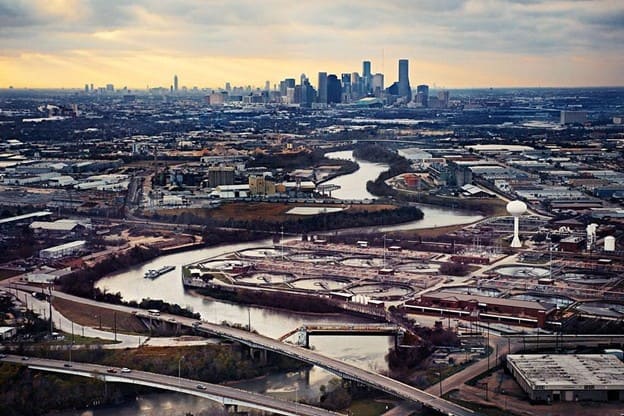When Your Kid Wants to Drive in Pasadena: How to Keep Your Sanity

It happens way too fast. Seriously, it feels like yesterday you were helping them reach the pedals on their bike, and now they’re standing there with their hands out asking for your car keys. Teaching your teenager to drive is honestly one of the most terrifying things you’ll ever do as a parent. You’ve got this kid who’s basically a walking hormone with zero real-world experience, and you’re supposed to let them control a giant metal death machine? Yeah, good luck sleeping at night.
Every parent approaches this milestone differently. Some dive in headfirst, others delay as long as possible, and many fall somewhere in between – wanting their teen to gain independence while desperately hoping they’ll make smart choices on the road.
Getting Started Behind the Wheel
Sure, driver’s ed teaches you the rules, but the real education happens when your mom or dad climbs into the passenger seat for the first time. Those early lessons are brutal for everyone involved.
Empty parking lots are a godsend during this phase. Hit up the mall after it closes, find some deserted office park on the weekend, or ask your church if you can practice in their lot. These places are perfect because you can figure out how hard to press the gas without launching into orbit, or practice parking without some impatient driver honking behind you. It’s just you, the car, and maybe a few shopping carts to navigate around – no pressure, no audience, just pure learning time.
Parents forget just how much brainpower driving actually takes when you’re starting out. All that stuff we do without thinking – glancing in the rearview mirror, keeping the speedometer steady, staying between the lines – it’s like juggling flaming torches for a brand new driver. They’re sitting there with their hands gripped tight on the wheel, trying to remember to check their blind spot while also making sure they’re not drifting into the next lane, and meanwhile, you’re casually chatting about dinner plans like it’s no big deal. What feels like breathing to us is basically mental gymnastics for them.
Getting the Right Habits to Stick
The way kids learn to drive in those first few months? That’s pretty much how they’re going to drive for the rest of their lives. Parents who make a big deal about safety stuff from the beginning usually end up with kids who actually check their mirrors and use their turn signals without being reminded. It’s all those little things – adjusting your seat and mirrors before you even put the car in drive, actually looking over your shoulder when changing lanes, signaling even when you think nobody’s around.
The phone thing is where most families really struggle. Let’s be real – asking a teenager to ignore their phone is like asking them to stop breathing. Every buzz, every notification feels urgent when you’re 16. But this is where parents really need to walk the walk, not just talk the talk. If you’re constantly on your phone while driving, your kid’s going to do the same thing no matter what you tell them.
A lot of families are doing these driving contracts now – basically writing down all the rules and expectations before handing over the keys. Sounds kind of formal, but it actually works pretty well. Everything’s right there in black and white: when they can drive, who can ride with them, who pays for gas, and what happens if they get a ticket. It prevents those “but I didn’t know” arguments later when someone screws up.
The Learning Curve
New drivers have zero sense of where their car actually is in space. Trying to park between two cars feels like threading a needle while blindfolded – they’ll be sitting there for five minutes trying to figure out if they’re going to scrape the bumper off the Honda next to them. And don’t even get me started on judging whether they have enough room to turn left at a busy intersection. That stuff just takes time and lots of practice before it starts feeling natural.
Highways are a whole different beast. The first time your kid tries to merge onto a freeway doing 70, they’re probably going to panic. Everyone’s flying by, they’re trying to speed up while also checking mirrors and figuring out where to squeeze in – it’s a lot. Most parents stick to side streets and regular roads until their teen can handle those without looking like they’re about to have a heart attack.
Then you throw in bad weather and everything gets ten times harder. A little rain can turn an easy drive into a white-knuckle experience for someone who’s still figuring out the basics. The smart move is teaching them early on that it’s totally okay to say “I’m not comfortable driving in this” and pull over or stay home. Better to miss whatever you’re going to than end up in a ditch because you pushed it when you shouldn’t have.
Insurance Considerations
Adding a teenage driver to the family insurance policy typically results in sticker shock. Teen drivers represent the highest risk category for insurance companies, and premiums reflect this reality. However, several strategies can help manage these costs.
Good student discounts reward academic achievement with lower rates. Defensive driving courses can also qualify for discounts while providing valuable safety training. Some insurance companies offer apps that monitor driving behavior and provide feedback or discounts for safe driving habits.
When shopping for coverage, parents should ensure their teen has adequate protection on the road. Those in the Pasadena area can find cheap car insurance Pasadena at 5108 Fairmont Pkwy B and compare quotes from multiple providers to find the best combination of coverage and affordability.
Technology as a Tool
These days, parents have all kinds of tech tools to keep tabs on their teen drivers. GPS tracking lets you see exactly where your kid went and how fast they were going – some systems will even ping your phone if they’re speeding or end up somewhere they’re not supposed to be. You can get these detailed reports that basically tell you everything: did they slam on the brakes, floor it at green lights, or drive like a maniac on the highway?
There are apps now that shut down texting and calling once the car starts moving. Pretty clever, really – takes away the temptation completely. Of course, your teen has to actually agree to use it, and let’s face it, some kids will find ways around anything if they really want to.
Dash cams are getting huge with parents too. If something happens – fender bender, someone cuts them off, whatever – you’ve got it all on video. But honestly, a lot of parents use them more for coaching. You can sit down together and watch how that parking attempt went, or talk through what happened when they had to make that tricky merge. It’s like having instant replay for driving lessons.
Gradual Independence
Most people who know what they’re talking about say to take it slow when you’re giving your teen more freedom behind the wheel. Start them off with quick trips to places they know – maybe just to school or the grocery store during the day. Then gradually work up to longer drives, nighttime trips, and eventually highway driving. It’s like learning to swim – you don’t throw them in the deep end right away.
The whole “no friends in the car” thing actually makes a lot of sense, even though your teen will probably argue about it nonstop. The numbers don’t lie – teens are way more likely to crash when they’ve got their buddies along for the ride. All that laughing and goofing around is exactly what you don’t want when someone’s still figuring out how to drive. That’s why a bunch of states actually have laws about this – new drivers can’t have passengers for the first few months.
Some parents are using apps and gadgets now that basically enforce the rules automatically. So if your kid tries to drive past curfew or picks up too many friends, you’ll know about it. It takes some of the guesswork out of trusting them, which honestly can make it easier to say yes when they ask to borrow the car. You get a little peace of mind, and they get a little more freedom – everybody wins.
Building Drivers for Life
The way your kid drives at 16 is probably how they’re going to drive at 30. If you drill into them that driving safely and being courteous matter, chances are they’ll carry that with them long after they’ve moved out and you’re not there to remind them anymore.
This whole thing isn’t just about getting them to pass their road test – though that’s obviously step one. It’s about raising someone who gets that driving isn’t just some cool thing they get to do now, but something that comes with real grown-up responsibilities. They need to understand that insurance payments, oil changes, and gas money are all part of the deal.
The biggest thing is helping them see that every time they get behind the wheel, they’re making decisions that could seriously impact other people’s lives. It’s not just about them anymore. Once that really clicks – that they’re responsible for everyone else on the road too – it changes how they think about driving completely.
Every family handles this transition differently, and there’s no perfect playbook for turning your kid from a nervous passenger into someone you trust with the car keys. But with enough patience, clear rules, and plenty of practice, most teens eventually become the kind of drivers who make you feel proud instead of terrified every time they back out of the driveway. And honestly, that’s about the best outcome any parent can hope for.

Pranab Bhandari is an Editor of the Financial Blog “Financebuzz”. Apart from writing informative financial articles for his blog, he is a regular contributor to many national and international publications namely Tweak Your Biz, Growth Rocks ETC.








